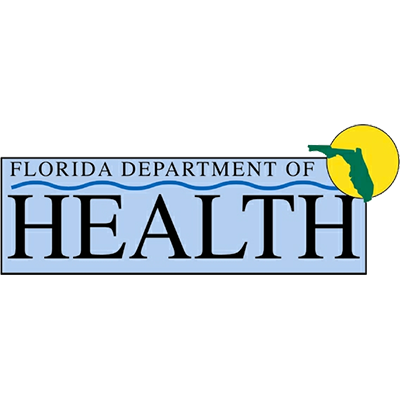Links to other resources: Residential Treatment, Detox, Type D Personalities
Florida Springs Wellness and Recovery Center in Panama City recently made a Facebook post about alcohol being the only drug that a person must justify Not using. While most other drugs are viewed somewhat negatively by the general public, alcohol has a long history as an acceptable form of social drug-taking, and in general is treated very differently from other drugs, both legal and illegal. While there is strong social pressure not to use a drug like methamphetamine for instance, and in most cases even using a drug like marijuana can be viewed in a dim light by the public, people often feel different types of social pressure and peer pressure to drink alcohol in various circumstances. Today we will look at a study that researched peer pressure and drinking. It is widely accepted that peer pressure often exists amongst certain groups of young people, and indeed youthful peer pressure to drink alcohol has been widely studied, but this particular study looked at a large group of young adults and people in their 30s and 40s. As always, if you or a loved one needs more information on the best drug and alcohol rehab in Florida, call us today at the number listed on this website or the number listed for Florida Springs in Panama City on Google.
Peer Pressure and Adults
It has been reported that over 30% of adults in the United States self-reported drinking habits that go beyond the accepted definition of low-risk social drinking. This would include people who drink alcohol more often than might be considered healthy, such as 4 or more days a week. It could also include people who binge drink once or twice per month and drink a dangerous amount on those occasions or put themselves in dangerous circumstances through activities related to that binge drinking behavior. Alcohol is a significant contributing cause or major cause in over 200 serious illnesses. Therefore, we can surmise that pressure which is being placed on individuals to engage in such unhealthy behavior is out-of-touch with the medical realities, despite the fact that it may be commonplace from a social standpoint. A study by the Global Health Survey found that Americans “get drunk” as much as 30 times per year on average as adults. As a large proportion of the population drinks much less than that, it is safe to assume that a large percentage of “problem” drinkers, some of which will be alcoholics by their own definition, likely drink to drunkenness over 100 times per year. We know that the body cannot sustain itself for long under those conditions without organ failure or other serious health problems building over time.
The study looked at two separate oft reported forms of peer pressure. “Peer pressure to drink alcohol was described differently by participants across studies. According to the authors, “a ‘friendly pressure’ to drink was more often expressed by people who themselves were drinkers–this was not typically perceived as peer pressure, but instead a more friendly style of drinking encouragement. However, non-drinkers and some university students experienced a more aggressive form of pressure, which was characterized as, at times, unpleasant and intimidating.” Many people reported that this aggressive peer pressure seems to dissipate once an individual finishes their schooling, including graduating or leaving university to enter normal adult life. Most participants reported “friendly” pressures to drink being more common in their 30s and 40s. Younger people were also more likely to feel pressure to “keep up” with faster drinkers. We know that this is dangerous, as fast drinkers are often more experienced drinkers, and trying to keep up with more experienced drinkers can lead to drinking way more than one can handle. This can result in injury, or in the worst circumstances, hospital visits and death.
Acceptance or “Coming Out”
Although most participants reported that “Gaining acceptance from peers regarding one’s choices to moderate or abstain from drinking alcohol was rare.” Despite this, some participants did report positive experiences with the process of “coming out” as a person who does not want to drink too much, or a person who abstains from alcohol entirely. There seems to be a fear of non-acceptance that may be worse than the reality for many people around peer pressure and drinking. In other words, participants worry about what others will think about them not drinking any more, but when they get the courage together to tell people they don’t want to drink, it is not such a big deal. Herring et al, a study performed in the UK, reports similar findings. In that study some female participants reported simply saying,
“I don’t want to drink.” I would repeat that for a bit and they tend to give up and go away.” The study authors observe that this participant ‘preferred to comprehensively refute peer pressure to drink alcohol, choosing to express her behavioral mind-set with complete clarity.
The fact that this direct method of gaining peer acceptance of preferences early on seems to jive with other studies findings. It seems to be easier to “rip the bandaid off” as it were, and put questions about your drinking habits to rest early on, and not have to revisit the topic all night, or every time you go out with friends. If anyone reading this needs professional help with substance abuse problems, call the number on the top of this website to reach the best drug and alcohol rehab in Florida, Florida Springs in Panama City.
By T.A. Cannon
References
MORRIS, H. et al. Peer pressure and alcohol consumption in adults living in the UK: a systematic qualitative review. BMC public health, [s. l.], v. 20, n. 1, p. 1014, 2020. DOI 10.1186/s12889-020-09060-2. Disponível em: https://search.ebscohost.com/login.aspx?direct=true&AuthType=sso&db=mnh&AN=32631278&site=eds-live&scope=site. Acesso em: 3 maio. 2022.




